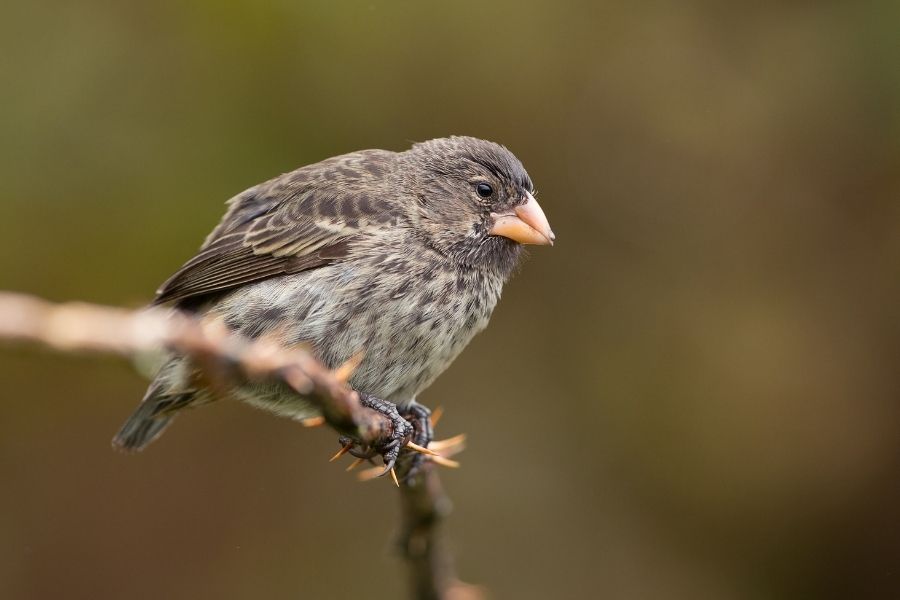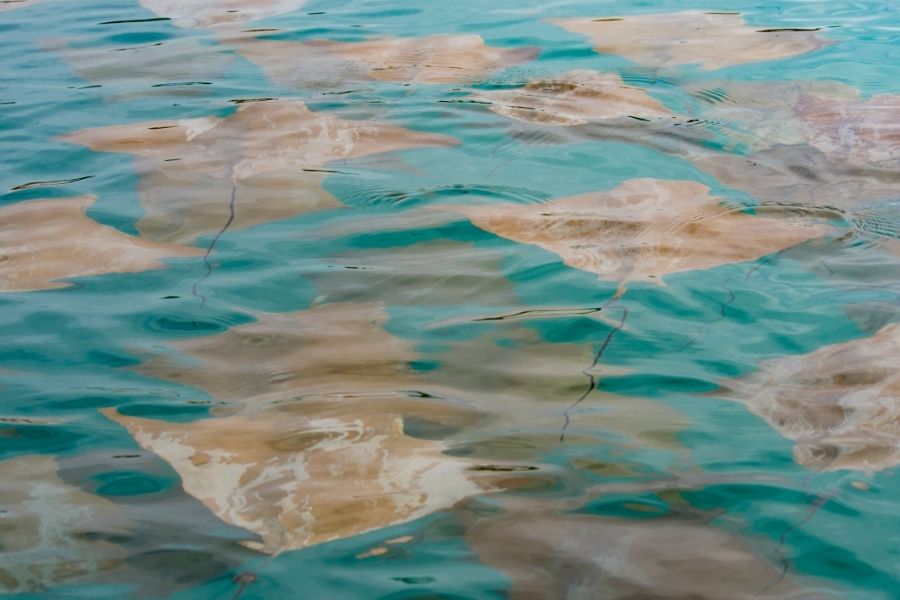
Rabida Island
Just five kilometers south of Santiago Island’s rocky shoreline lies one of the Galapagos Archipelago’s smallest islets, Rabida Island. Known officially as Isla Rabida in Ecuador, the landmass bears the name of the convent of Rabida in Spain where Italian explorer Christopher Columbus left his son in care during his voyage to the Americas.
Rabida Island is also sometimes referred to as Jervis Island, so named in honor of the 18th century British admiral and 1st Earl of St. Vincent, John Jervis. Jervis was a British politician and naval officer who is most recognized as a naval reformer who sailed through the Americas on numerous occasions. Funnily enough, although an avid traveler, Jervis ironically never set foot on the Galapagos Islands.
Iconic red sand beaches
Despite its small size of just three square kilometers, or one square mile, Rabida Island has gained a strong reputation among fellow travelers as a must-visit destination due to its striking red sand beaches (unique from the white sandy beaches you will find across the archipelago). Rabida also features eroded hillsides and dramatic volcanic landscapes which all bear the island’s signature deep-crimson coloring.
So, how did the sand on Rabida Island acquire its unique hue? Red sand beaches derive their color from the oxidation of iron-rich volcanic materials. When the iron in the terrain comes into contact with the oxygen in the air, it creates iron oxide or in layman’s terms, rust. What this does is transform the sand into varying shades of rust-tinged red. This is the same chemical reaction that gave Mars its reddish tone and subsequently its nickname, the Red Planet.
Image credit: Joachim Pietsch, Creative Commons 2.0
If you are exploring the Galapagos Islands on board the Aqua Mare, you will make your way to Rabida Island’s shores via tender. As you approach the island, you will immediately be able to spot its unmistakable crimson shoreline that sits in front of a salt water lagoon, surrounded by red volcanic cliffs. Here, you will be able to hike the arid landscape, or enjoy water-based activities such as swimming, stand-up paddle boarding, snorkeling, and kayaking in the midst of a thriving colony of endemic sea lions.
Island Wildlife
In addition to the playful colony of sea lions that bask under the sun on Rabida’s red beach, this island is also home to a flourishing avian population. Just a stone’s throw away from the coastline lies a salt water lagoon which plays residence to a flamboyance of pink-feathered flamingos. Among these vibrant birds, you will also be able to spot pintail ducks and common stilts.
If you take a short walk inland through the lagoon’s surrounding salt bushes, you’ll have the unique opportunity to see brown pelicans nesting within the blue-gray foliage. These large water birds can grow up to 1.5 meters tall and are endemic to the archipelago.
As you continue to explore the island, don’t forget to keep binoculars on hand. Nine of thirteen species of Darwin’s finches have been sighted here and if you keep your eyes peeled, you may be lucky enough to spot them.
Preserving the balance of a harmonious ecosystem
The Galapagos Islands are a UNESCO World Heritage site because of the significance of their unique ecosystems. They’ve been referred to as a ‘living museum showcasing evolution’. To preserve the region’s delicate and unique biodiversity, many conservation and protection efforts have been deployed to keep the endemic flora and fauna flourishing.
One such effort was the eradication of goats from Rabida Island which took place in 1971. Goats were an invasive species which had been introduced to the area by colonists. They upset the natural balance of the island and led to the extinction of several native species such as geckos and land iguanas.

In 2011, another endeavor was carried out with the aim to eradicate an imported species of rat. Although it is unknown when and where this species came from, it is thought that the rats had a detrimental effect on both vegetation and wildlife. One endemic species that came under direct threat as a result of these external influences is the Scalesia, also known as the giant daisy tree. This vulnerable genus of vegetation is part of the same family as lettuce, marigold and chamomile and has been referenced as the Darwin’s finch of the plant world due to its extraordinary adaptive abilities.
Today, authorities have put in place stringent protection rules and regulations in the area and are working towards reintroducing endemic species to the island.
Where do we go next?
For those traveling on Aqua Mare’s West Galapagos expedition, your Rabida Island chapter will close with a scrumptious lunch and fascinating afternoon lecture in the vessel’s panoramic lounge. Given by our outstanding naturalist guides, who are local experts on the wildlife, flora, and history of this region, this talk will delve into the evolution of Darwin’s finches that you will have seen during your excursion to Rabida Island.

Your journey will then continue southwards to the north coast of Santa Cruz Island, Galapagos’ second biggest island located at the heart of the archipelago. Here you will explore the Caleta Tortuga Negra (Black Turtle Cove) – an ecological gem that can only be navigated by tender. As you meander through the passageways of this mangrove estuary, you will have the unique opportunity to spot rare green sea turtles, schools of golden stingray, and white-tipped sharks.



